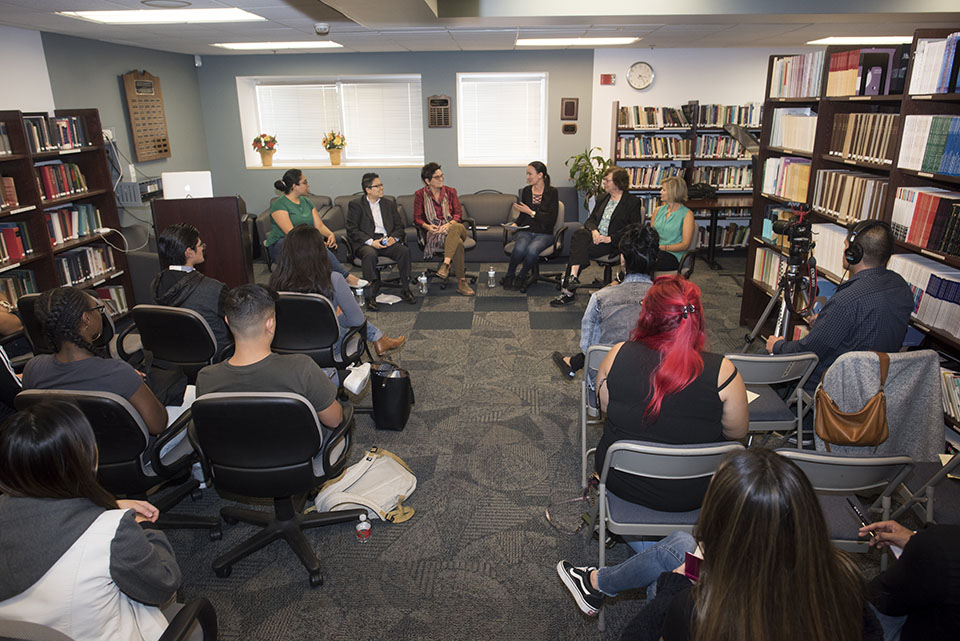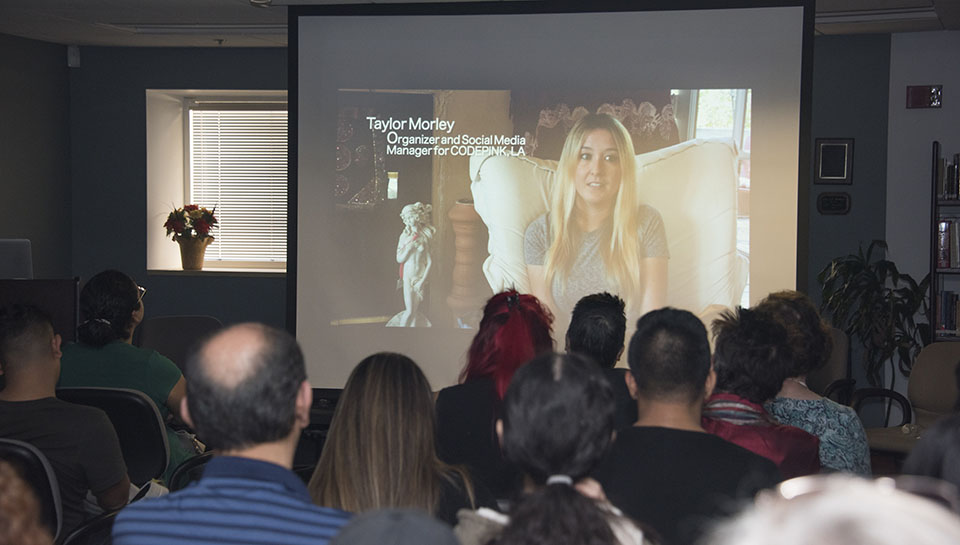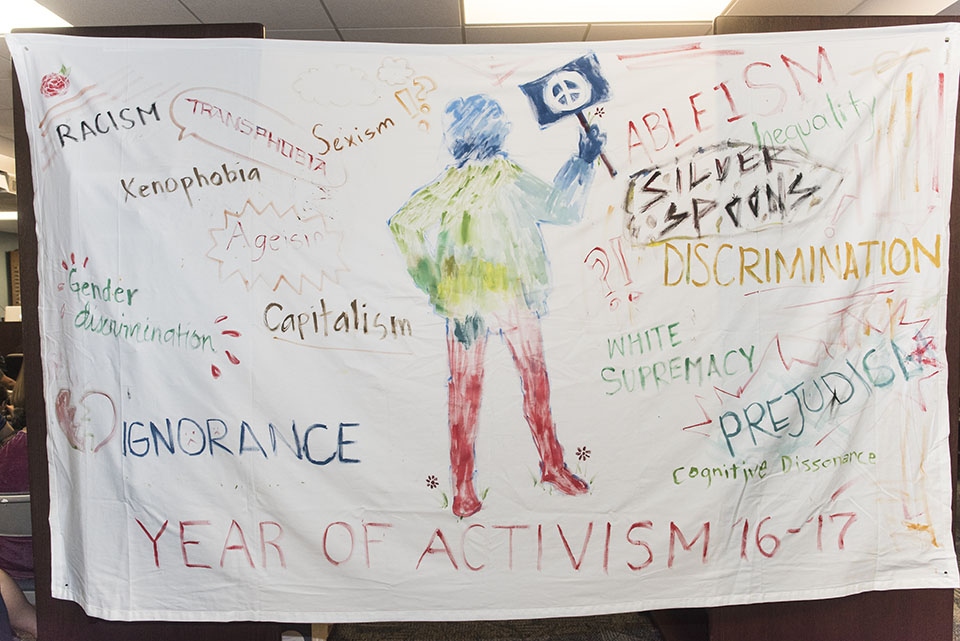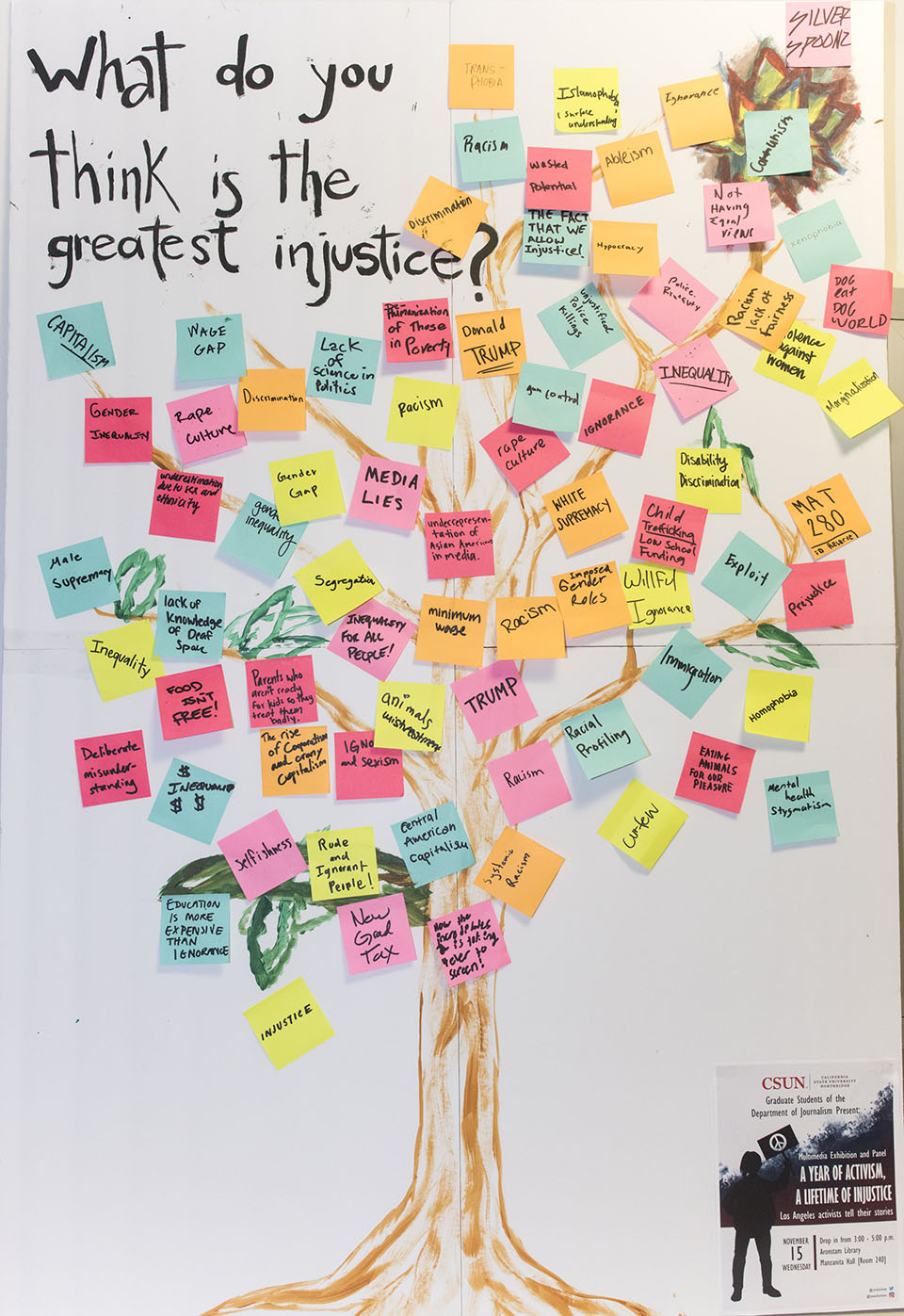CSUN Graduate Students Present on “A Year of Activism”
With a multimedia exhibition and panel titled “A Year of Activism,” graduate students in the California State University, Northridge Department of Journalism invited the community to a discussion on activism, Nov. 15 in Manzanita Hall.
During a year of increased activism after the election of President Donald Trump, 11 grad students in the mass communication program conducted interviews with 22 Los Angeles activists on causes including women’s rights, LGBTQ rights, immigrants and animals. These interviews culminated in a 10-minute documentary, which the group screened at the exhibition.
The highlight of the event was the panel discussion with five activists. The featured panelists spoke on a variety of subjects that ranged from media and first steps in activism, to how to balance a family life while living an activist’s lifestyle. A diverse crowd of students, faculty and staff attended and eagerly asked questions of the panelists.
“I didn’t know there was so much activism in the world,” said Monica Rodriguez, a CSUN journalism major. “It was really amazing to learn how you can go from point A to point B if you’re very passionate about what you believe.”
On the question of how to dive into activism, panelist James Wen recommended patience.
“With activism, there comes a level of patience that needs to be there with the activism,” Wen said. “Each body that goes through and either makes a call or writes a letter to your legislative leader counts as one, but it’s one to maybe 5,000. There’s a ratio. So, the more of us that actually go and take these actions increases the number of people they’re counting [in that ratio].”
Wen works as a survivor advocate at Program for Torture Victims, a nonprofit organization that helps refugees from more than 70 countries rebuild their lives in the United States.
Kathryn Sorrells, professor and chair of the Department of Communication Studies at CSUN, added that activists are incredibly hopeful people.
“There are sometimes quick victories, but the thing I would reiterate is how sustaining [activism] has to be,” Sorrells said. “Even if you have to keep coming back, you’re actually working on something you really believe in — and you’re trying to create something that is better for the people and the world around you.”
Darlynn Childress, co-founder of the new organization Suburban Women’s Advocacy Network, a women’s group engaged in local activism, shared information on how their network operates. Childress shared that she was inspired to launch the network after Trump’s presidential election last year, and that the network works to inspire suburban women to support causes for those less fortunate. In her work, Childress said, she noticed that many suburban women liked to do things as a group. She pointed out that this is a common theme in activism: It can start with one person in a group of friends saying, “What do we want to do?” and then organizing that group of friends to join a cause.
Panelist Cecile Bendavid, professor in the Department of Computer Science at CSUN, discussed how media affects the community and activists.
“They have to do something about the 11 o’clock news,” Bendavid said. “Every single night, it’s a new car chase. Why do we need car chases? I want to see the news. I want to know what happened during the day.”
For students who want to contribute to issues on a smaller scale, Claudia Vargas, assistant and case manager at Program for Torture Victims, suggested using social media to share articles, or essays in class to advance topics about which they are passionate.
The panelists all agreed on one point: Activism can be portrayed as very serious business, but it can also be quite fun.
“It becomes a lifestyle,” said Childress. “I don’t know if I thought I would do it for a little while and then stop. I didn’t have any plan. But a year in, I’m like, ‘I think I might be doing this forever now’.”
To learn more about the graduate students’ project, visit http://www.yearofactivism.com.





 experience
experience